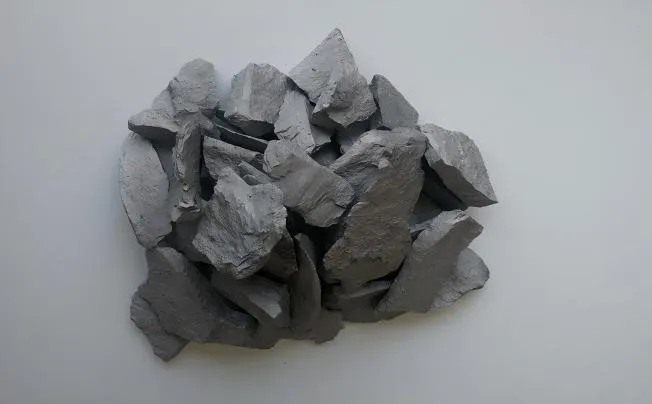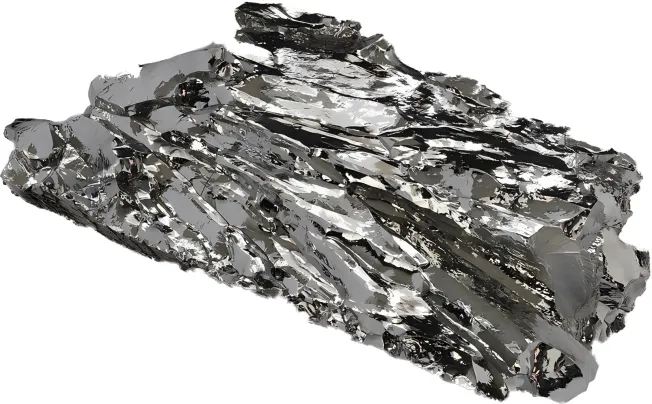Tungsten, a metal with a rich history and a promising future, has long been a cornerstone in various industries due to its unique properties.
What is Tungsten?
Tungsten, also known as wolfram, is a chemical element with the symbol W and atomic number 74. It is a rare, hard, dense metal renowned for its exceptional properties. Tungsten has the highest melting point of all metals at 3,422°C (6,192°F), making it highly resistant to heat and wear.
It also has a high density, comparable to gold, and excellent thermal and electrical conductivity. These unique characteristics make tungsten an indispensable material in various industries, from aerospace to electronics.
Tungsten's physical properties are not its only distinguishing features. It is also chemically inert, meaning it does not react easily with other elements, which enhances its durability and stability. This property is particularly valuable in applications where materials are exposed to harsh environments, such as high temperatures, corrosive chemicals, or mechanical stress.
Tungsten's hardness, measured at 7.5 on the Mohs scale, is another key attribute that sets it apart. This hardness makes it ideal for cutting tools and wear-resistant components, where durability and longevity are crucial.
Despite its many advantages, tungsten is not without challenges. It is a brittle metal at room temperature, which can make it difficult to work with in certain applications. However, when alloyed with other metals, such as steel, tungsten can become more malleable and easier to shape. This versatility has led to the development of numerous tungsten-based alloys, each tailored to specific industrial needs.
Factors Affecting Tungsten's Price
Mining and Extraction Costs
The journey to unearth tungsten from the Earth's crust is fraught with complexity and expense, primarily due to the mineral's scarcity and the geological challenges associated with its extraction. Tungsten deposits are often found in hard rock formations, necessitating the use of heavy machinery and explosives to break through the resistant bedrock.
This process not only increases the initial capital investment required for mining operations but also escalates the ongoing operational costs. The mining of tungsten ore is further complicated by the need to manage environmental impacts, which adds another layer of expense in the form of compliance with stringent regulations and the implementation of sustainable mining practices.
The geographical distribution of tungsten deposits adds another dimension to the cost equation. Predominantly found in China, which holds a significant global reserve, the location of these deposits can lead to geopolitical tensions and supply chain vulnerabilities.
Mining companies often have to establish operations in remote or politically unstable regions, increasing the risk and cost of logistics and security. Furthermore, the need to transport the raw ore to processing facilities, often located far from the mining sites, incurs additional transportation costs, which can significantly impact the final price of tungsten.
The challenges inherent in tungsten mining are not only logistical but also technical. The ore itself is typically low-grade, meaning that a large volume of rock must be processed to extract a small amount of tungsten.
This low yield necessitates the use of sophisticated extraction techniques, such as froth flotation, which adds to the cost of mining. Additionally, the presence of other minerals in the ore, such as scheelite and wolframite, requires careful separation processes, further increasing the complexity and expense of extracting pure tungsten.
Processing and Refining
The transformation of raw tungsten ore into a usable metal is a process that demands both high energy inputs and advanced technological solutions, significantly affecting its overall cost. The refining of tungsten involves several stages, including crushing, grinding, and the use of chemical reagents to separate the tungsten from other minerals.
These processes are energy-intensive, with each step requiring precise control to maximize yield and minimize waste. The high energy consumption associated with tungsten refining is a major factor contributing to its expense, as energy costs can fluctuate widely, impacting the final price of the metal.
The complexity of tungsten refining is further compounded by the need for specialized equipment and expertise. The conversion of tungsten ore into tungsten powder, for instance, requires the use of high-temperature furnaces and precise control over the chemical environment to ensure the production of high-purity tungsten.
This necessitates significant investment in technology and infrastructure, which can be prohibitive for smaller operations and thus contribute to the overall cost of tungsten. Additionally, the production of tungsten carbide, a highly valued form of metal used in industrial applications, involves additional steps such as sintering, which further increases the cost due to the high energy and technological requirements.
Technological advancements in the refining process can help mitigate some of these costs, but they also require ongoing investment in research and development. Innovations such as more efficient separation techniques and the use of renewable energy sources in the refining process can potentially reduce the energy footprint and thus the cost of tungsten.
However, the adoption of these technologies is often slow and expensive, meaning that the immediate impact on tungsten's price may be limited. The balance between investing in new technologies and maintaining cost-effective operations remains a critical challenge for the tungsten industry.
Market Demand and Supply
The demand for tungsten is driven by its use in a wide range of industrial applications, including cutting tools, wear-resistant parts, and high-temperature applications. As global manufacturing continues to grow, particularly in emerging economies, the demand for tungsten is expected to increase, putting upward pressure on its price.
Conversely, any downturn in these industries can lead to a decrease in demand, potentially lowering the price of tungsten. Global demand trends are also influenced by technological advancements and shifts in consumer preferences.
The concentration of tungsten production in China, which accounts for a significant portion of global supply, creates a vulnerability in the supply chain. Any disruptions in Chinese production, whether due to environmental regulations, labor issues, or geopolitical tensions, can lead to supply shortages and price spikes.
Additionally, the need to maintain a robust supply chain, including the transportation of raw materials and finished products, adds to the overall cost of tungsten. The balance between supply and demand is a delicate one, and any shifts can have a significant impact on the price of tungsten.
Economic Factors
Economic factors such as currency fluctuations and trade policies play a significant role in determining the price of tungsten. The value of the Chinese yuan, for instance, directly affects the cost of tungsten, as China is the world's leading producer. A weakening yuan can make tungsten cheaper on the global market, while a strengthening yuan can lead to higher prices.
These fluctuations can be unpredictable and can cause significant volatility in the price of tungsten, making it challenging for buyers and sellers to plan and budget effectively. Trade policies and tariffs also have a profound impact on the price of tungsten.
Tariffs imposed on tungsten imports can increase the cost of the metal for countries relying on these imports, affecting industries that use tungsten in their products. Conversely, the removal of tariffs or the establishment of trade agreements can lead to a decrease in price, making tungsten more affordable.
The complex web of international trade policies and agreements adds another layer of uncertainty to the price of tungsten, as changes in these policies can have immediate and far-reaching effects. The interplay of these economic factors creates a dynamic and often unpredictable environment for the tungsten market.
Companies involved in the production and trade of tungsten must navigate these challenges, balancing the need to remain competitive with the need to manage costs and risks. The ability to adapt to changing economic conditions is crucial for success in the tungsten industry, and those who can effectively manage these factors are better positioned to influence the price of tungsten and maintain a stable supply chain.
Future Trends and Predictions
Technological Advancements in Tungsten Processing
The future of tungsten processing is poised for significant advancements that could revolutionize the industry. One of the most promising areas of development is in the refinement of extraction techniques. Traditional methods of tungsten extraction, such as froth flotation and gravity separation, are energy-intensive and often result in low yields.
However, recent innovations in chemical leaching and bioleaching are showing great potential. Chemical leaching involves the use of reagents to dissolve tungsten from its ore, making it easier to separate and purify.
Bioleaching, on the other hand, utilizes microorganisms to break down the ore, a process that is not only more environmentally friendly but also more cost-effective. These advancements could significantly reduce the overall cost of tungsten production, making it more accessible to a broader range of industries.
Another area of technological advancement is in the recycling and reclamation of tungsten. As the demand for tungsten continues to grow, the need for sustainable practices becomes increasingly important.
New recycling technologies are being developed to recover tungsten from spent products, such as cutting tools and electronic waste. These technologies include advanced mechanical and chemical processes that can efficiently separate tungsten from other materials.
Furthermore, the integration of artificial intelligence (AI) and machine learning (ML) in tungsten processing is expected to bring about significant improvements in efficiency and precision. AI can be used to optimize the extraction and refining processes by analyzing data in real time and making adjustments to maximize yield and minimize waste.
Machine learning algorithms can predict equipment failures and maintenance needs, reducing downtime and operational costs. Additionally, AI can help in the development of new tungsten alloys and compounds by simulating their properties and performance, accelerating the innovation cycle in the industry.
Potential
Tungsten's high melting point, excellent thermal conductivity, and exceptional hardness make it an ideal material for use in high-temperature and high-stress environments. For example, tungsten is being explored for use in next-generation nuclear reactors, where its ability to withstand extreme temperatures and radiation makes it a critical component.
Similarly, in the aerospace industry, tungsten is being used to develop lightweight, high-strength materials for aircraft and spacecraft components, enhancing performance and safety. In the electronics industry, tungsten plays a crucial role in the development of miniaturized and high-performance devices.
Tungsten's low electrical resistivity and high thermal stability make it an excellent material for use in semiconductor devices, such as transistors and diodes. As the demand for smaller, faster, and more efficient electronic devices continues to grow, the use of tungsten in these applications is expected to increase.
Additionally, tungsten is being used in the production of advanced coatings and thin films, which are essential for improving the performance and durability of electronic components. The potential of tungsten in the medical field is also noteworthy.
Tungsten's high density and biocompatibility make it an ideal material for use in medical imaging and radiation therapy. Tungsten alloys are being used to create high-precision medical devices, such as X-ray tubes and radiation shielding.
In radiation therapy, tungsten is used to create collimators and other components that help to focus and control the delivery of radiation, improving treatment outcomes and reducing side effects.








